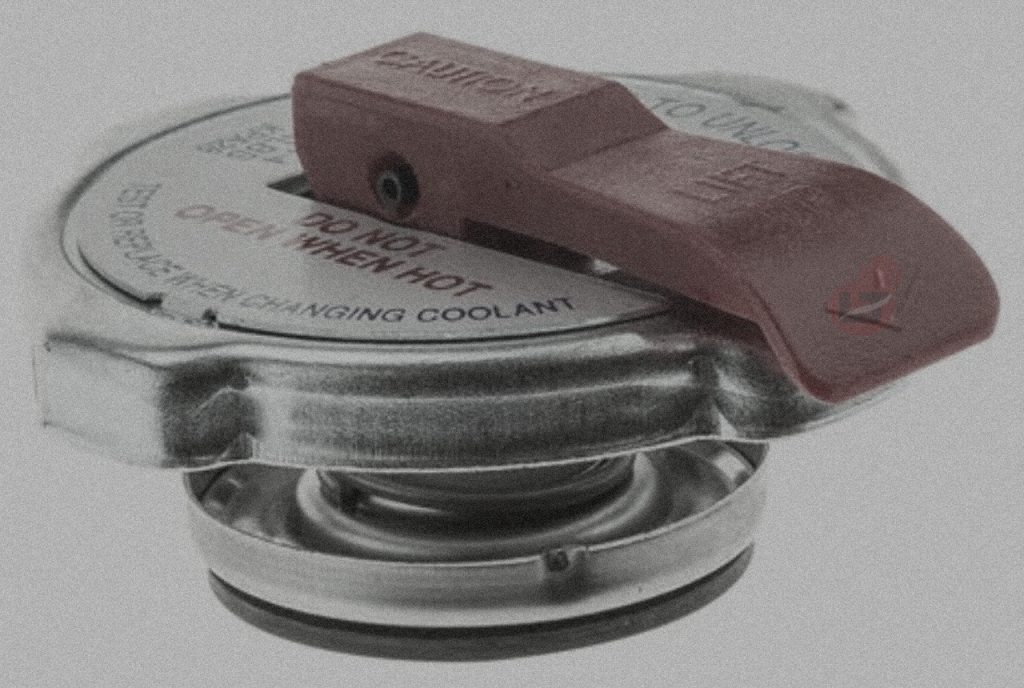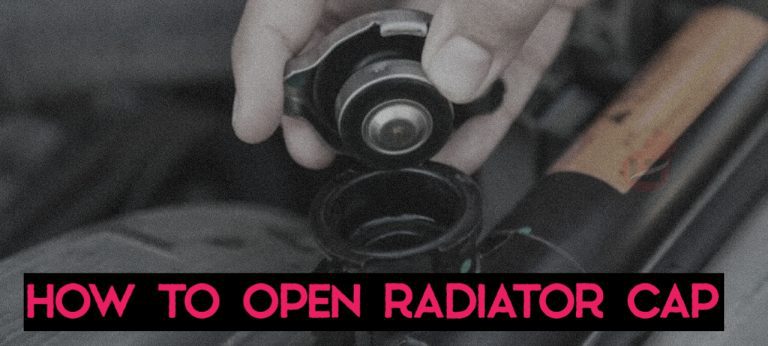Opening a radiator cap can be simple, but following proper safety precautions is essential to avoid accidents.
A radiator cap is a component of a car’s cooling system that helps to regulate the pressure and flow of coolant in the radiator. It also prevents contaminants from entering the radiator.
To open a radiator cap, you’ll need first to remove the release latch attached to the radiator cap using a plier, then lift the lid – you can use your hand to turn the radiator cap anticlockwise until it gets off carefully – or you can push on a button with the inscriptions “push” to open – depending on the radiator cap installed on your car.
In this article, we’ll show you a step-by-step guide on how to open a radiator cap easily.
How to Open a Radiator Cap
To open the radiator cap, you must release the latch or lever used to hold the lid. Once the lever is terminated, you can carefully lift the lid off the radiator.
As discussed earlier, some radiator caps don’t use a latch or lever; in this case, you can rotate the lid in an anticlockwise direction until it’s loose.
Here’s a step-by-step guide:
1. Safely Park the Car and Raise the Hood
After finding a safe place to park your car, you’ll need to raise your vehicle’s hood to access the radiator cap.
Also, this will aid in cooling the engine faster by allowing air into the engine system.
2. Make sure the Engine is Cool
Before you open the radiator cap, letting the engine cool down entirely is essential. If the motor is hot, the radiator cap will release steam and hot coolant, which can burn you.
You can confirm this by squeezing your upper radiator hose. If there’s pressure on the hose, wait until there’s no pressure on it (touch it with a wet cloth).
3. Wear Protective Gear
To protect yourself from steam and hot coolant, wearing protective gear such as gloves, goggles, and a long-sleeved shirt is a good idea.
4. Find the Radiator Cap
The radiator cap is usually located on the top of the radiator, in front of the engine. You may also need to remove components that might come your way.
5. Locate the Release latch/lever
The radiator cap is usually secured with a release latch or lever. You’ll need to use a radiator cap wrench, a pair of pliers, or your bare hands to unlock the latch.
However, if your radiator cap doesn’t come with a release latch, then you can either lift the lever or turn the cap in an anticlockwise direction to unlock the
6. Open the Radiator Cap
With gloves on (or a wet cloth in your hands), carefully lift the radiator cap from the radiator.
If your radiator doesn’t come with a latch or lever attached, open the radiator cap by turning the cap in an anticlockwise direction using a wet cloth.
Be careful not to touch the cap or the radiator while it’s hot with your bare hands.
7. Check the Coolant Level
You can now inspect the coolant level and top it up if it is low.
8. Close the Radiator Cap
Once you’re done checking the coolant level, carefully replace the radiator cap by pressing it down firmly and securing the release latch.
Ensure the cap is fully seated and the latch/hook/lever is fully engaged to prevent leaks.
Also, turn the radiator cap in the counter direction to tighten it – if your car comes with a different hat.
That’s all about opening a radiator cap.
Always follow the manufacturer’s instructions and exercise caution when working with hot engine components. If you’re unsure how to open the radiator cap or have any concerns, it’s best to consult a professional mechanic.
FAQs
Why can’t I open my radiator cap?
There are several reasons why you can’t open a radiator cap; these include;
- The engine is too hot: it must cool down before opening the radiator cap to prevent skin burns.
- The radiator cap is stuck: If it is attached, releasing the latch may not be easy. In this case, you can use a radiator cap wrench or a pair of pliers to pry the cap off.
- The radiator cap is damaged: installing a new one is the fix.
- The radiator cap is pressurized: If the radiator is pressurized, it may be difficult to open the radiator cap. In this case, you’ll need to wait for the pressure to dissipate before opening the lid.
If you cannot open the radiator cap and are unsure why, it’s best to consult a professional mechanic for assistance.
How long do you have to wait to open a radiator cap?
Letting the engine cool down completely before opening the radiator cap is essential. The time it takes for the engine to cool down will depend on the engine’s temperature.
Generally, it’s best to wait at least an hour after driving the car before opening the radiator cap.
If the car has been running for an extended period or the ambient temperature is boiling, it may take longer for the engine to cool down. In these cases, waiting at least two hours before opening the radiator cap is best.
You can touch the radiator hose or the top to ensure the engine is excellent. If it’s too hot to touch, the engine is not cool enough to open the radiator cap.
How do you open a radiator cap with a lever?
Most radiator caps have a release latch that can be opened using a radiator cap wrench, a pair of pliers, or your hands. However, some radiator caps come equipped with a lever that can be used to release the radiator cap.

Here’s a step-by-step guide on how to open a radiator cap with a lever:
- Open the hood and locate the radiator cap
- Locate the lever: The lever can release the radiator cap. The lever is usually located on top of the radiator cap.
- Slowly release the radiator cap: Lift the lever upwards to unlock/remove the radiator cap.
That’s it.
Can I open the radiator cap when warm?
Opening the radiator cap while the engine is warm is generally not recommended. The radiator cap is designed to release steam and hot coolant when opened, which can burn you if you’re not careful. Additionally, if the coolant is hot, it may expand and create pressure in the radiator, making it more challenging to open the cap.
Conclusion
It’s essential to keep the radiator cap in good condition to ensure the smooth operation of the cooling system.
It’s also noteworthy that your car might come with a different type of radiator cap discussed in this article; in this case, I suggest you consult your manufacturer guide or contact a mechanic.
If you notice any issues with your radiator cap or have any concerns, it’s best to consult a professional mechanic.
As an Amazon Service LLC Program Associate, V. Auto Basics earns from qualifying purchases. See Our Affiliate disclaimer.
